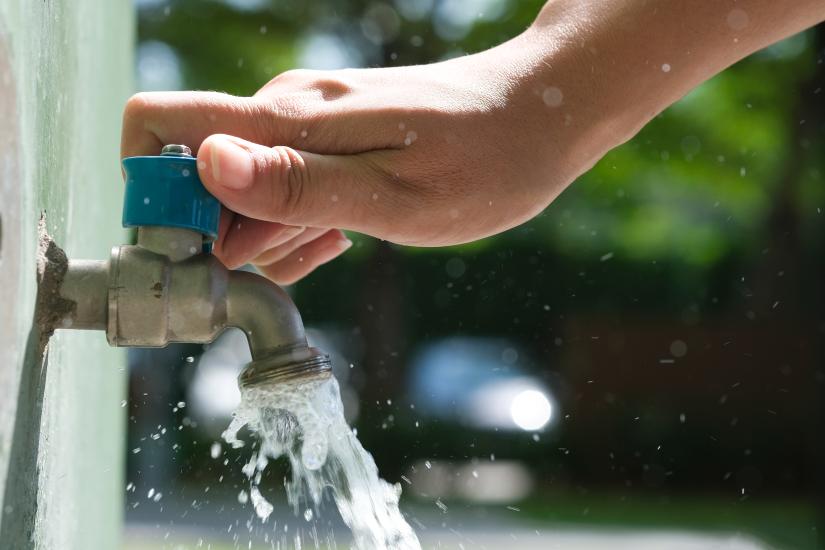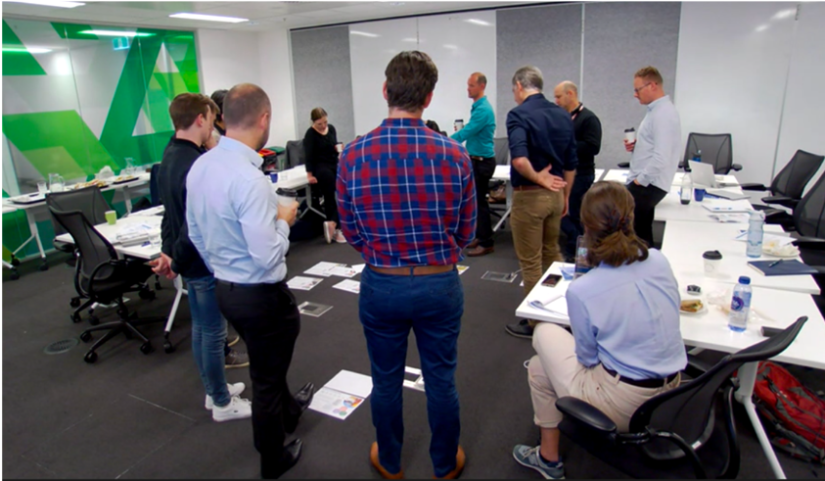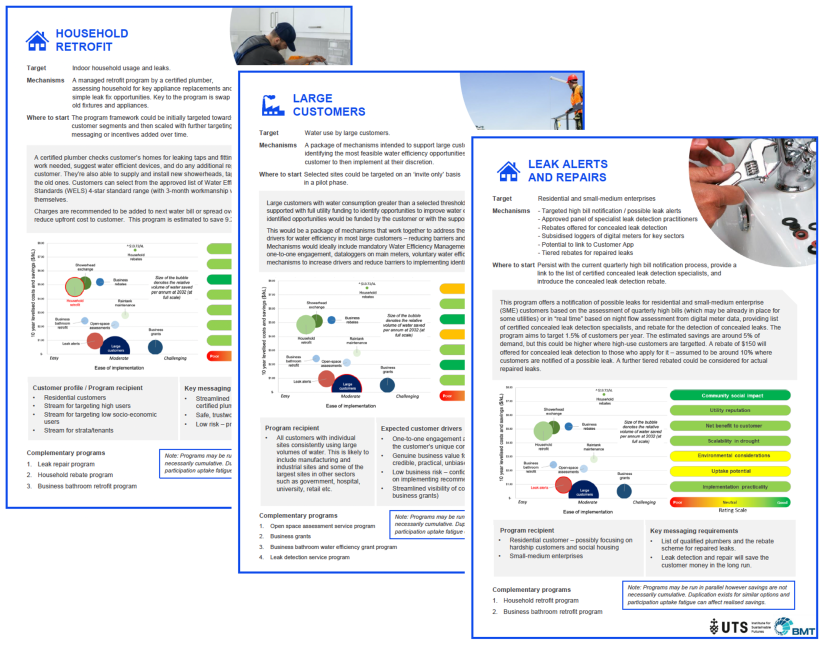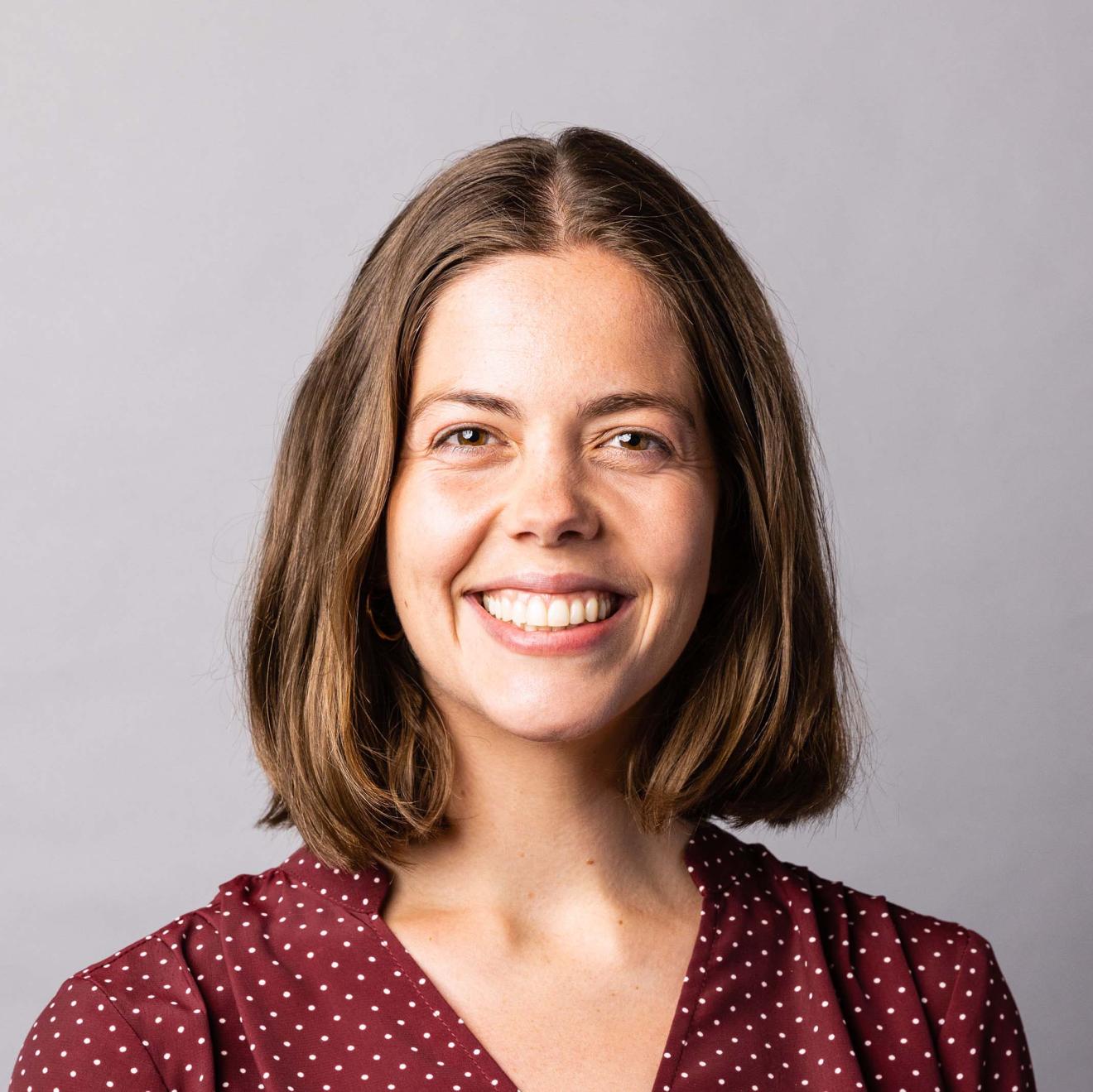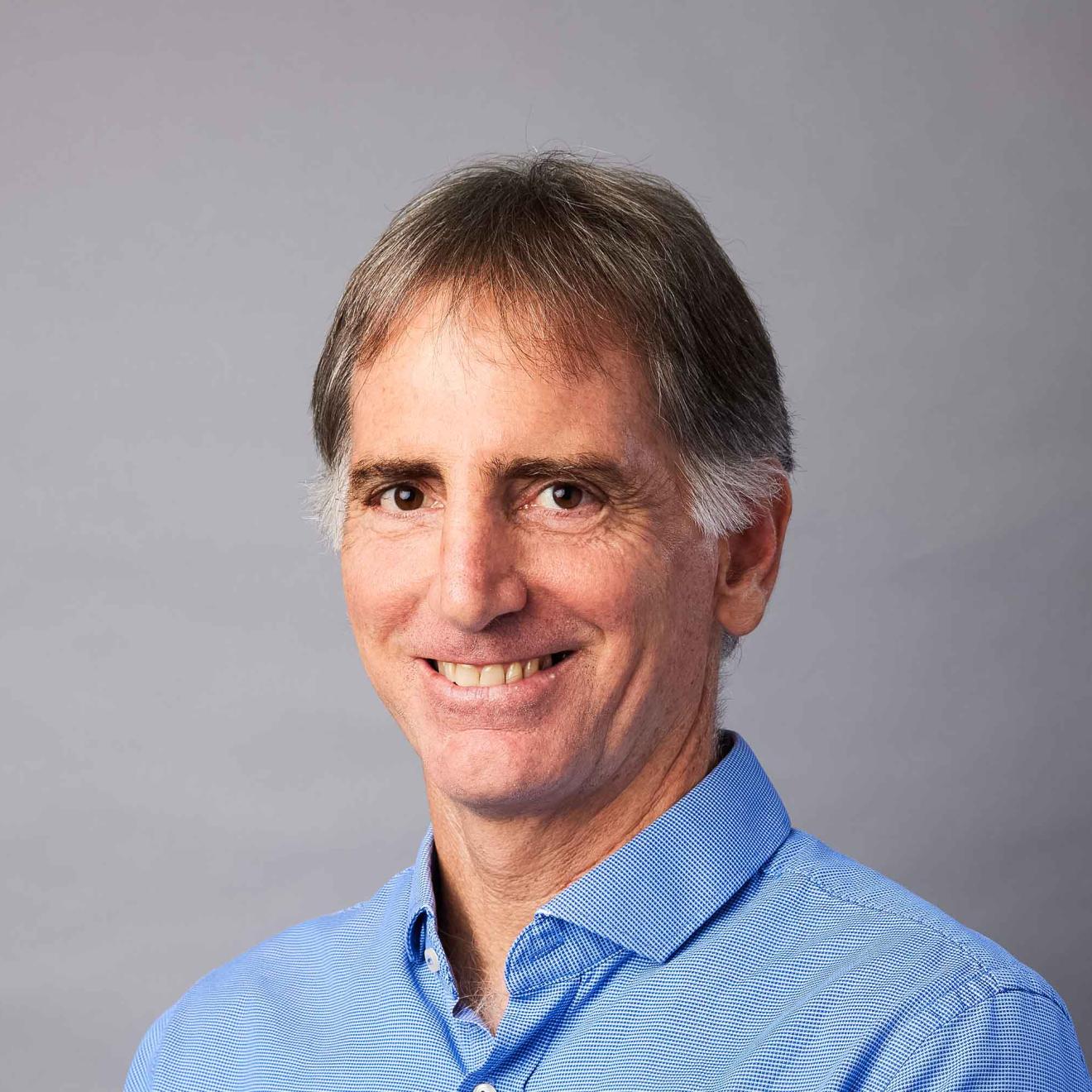The implementation of a wide range of water efficiency programs can make a significant difference to water demand, not only in the residential sector, but also across non-residential buildings and business.
The Institute for Sustainable Futures (ISF) and BMT partnered with Greater Western Water, Melbourne Water, South East Water and Yarra Valley Water (the Melbourne water businesses) to develop a suite of water efficiency program outlines that aimed to reduce demand, and reduce the pressure on natural water supplies and delay large investment in new supply and distribution augmentations. The project was led on behalf of the Melbourne water businesses by the Water Efficiency Working Group (WEWG).
The objective of this project was to select 10 water efficiency programs and collate relevant information and ideas into ‘program outlines’ for each to support the Melbourne water businesses in selecting preferred programs and developing business cases to implement these in the future. This required curation of a wide range of program options into a shortlisting and selection process. This was followed by the development of outlines that would work around knowledge gaps to provide guidance on program delivery, resourcing, scalability, key considerations and drivers, risks, costs, benefits and evaluation.
The researcher’s approach to developing programs was to first understand the target for the water savings (e.g., reduce water used by washing machines or reducing outdoor use) and then secondly to determine what delivery mechanism would be most effective for achieving those savings (e.g. a targeted rebate to large households or a garden irrigation tune-up rebate). This can be expressed as:
An effective program = clearly defined target + appropriate delivery mechanism
The defining of the targets and then establishing the delivery mechanisms was pivotal to the methodology and research approach. The targets already proposed were identified and assessed as to whether there were alternatives to consider. The research team drew on their knowledge and available information to recommend the most effective delivery mechanism for each proposed target and present this to the WEWG.
Researchers
-
Research Consultant
-
Professor of Water Futures
-
Research Principal
-
Senior Research Consultant
Year
- 2022-2023
Client
- South East Water Limited
Location
- Victoria, Australia
SDGs
This project is working towards UN Sustainable Development Goal 11 and 12.
